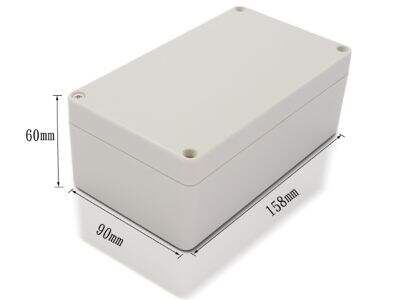Welding is a method of connecting stainless steel objects. It's like, if you apply a special adhesive (a weld?) you might connect two metal pieces. Stainless steel is durable and high-quality material. We produce things from it, like kitchen appliances or jewelry or skyscrapers. We are not taught many tricks how to weld stainless steel properly.
When welding stainless, we use a special welding machine that produces heat. This heat causes the metal where the two parts meet to melt. Once the metal cools, it solidifies and holds the parts together safely. Welding stainless steel is tricky, however: It will crack if done the wrong way. That's why you have to do it the right way and with the right tools to weld.
Keeping the Appearance of Stainless Steel Parts
We also need to clean our even waterproof electrical box when we weld it so that it will be pleasing to the eye and will not rust. Making the surface resistant is similar to applying a coat of paint on metal so it will be protected. If you maintain it well, stainless steel ought to last you a long time and will still be in its best condition.
One of the most prevalent means of treating stainless steel is passivation. That is to apply special chemicals to the surface to clean the surface and leave a protective layer that will not rust. Electropolishing is another way, which involves using electricity to polish the surface and give it a shine.
Strengthening Stainless Steel with the Right Welding Techniques
Welding well is extremely important in order to keep stainless steel stamping parts strong. When we are melting the metal in order to weld two pieces of metal together, it is important that we use the correct amount of pressure and heat to produce a solid join that will not destroy the metal. It is difficult, and it is not done often correctly, but it can be accomplished.
One of the most critical ways to make it more strong is by the back purging process. A specialized gas shields the back of the weld from oxygen, which would leave the bond weak and might form rust. Another process is the post-clean welding process, in which we eliminate whatever residue is left on the welding in order to keep the bond clean and as strong as possible.
Diverse Techniques of Surface Treatment in Stainless Steel
Stainless steel may be treated in numerous ways, and there are advantages to each way. Some of the more popular methods of doing these are painting, powder coating or anodizing. Painting is coloring a coat of paint on the metal so it won't rust. Powder coating is where we take a dry powder and and it bakes hard, producing a tough shell. Anodizing is applying electricity to form a protective coating on the surface of the metal.
Extending Your Stainless Steel Components
They kind of strike me as vampires, these bei-.guns. waterproof electrical box Well-welded and well-treated stainless steel parts will keep going for decades and look fine with proper surface treatment. Quality welding creates a fine join between two pieces of metal, and coatings keep the metal rustproof. By regular maintenance, these stainless steel products of Hongfa Shunda can work for decades to come in a healthier condition.


